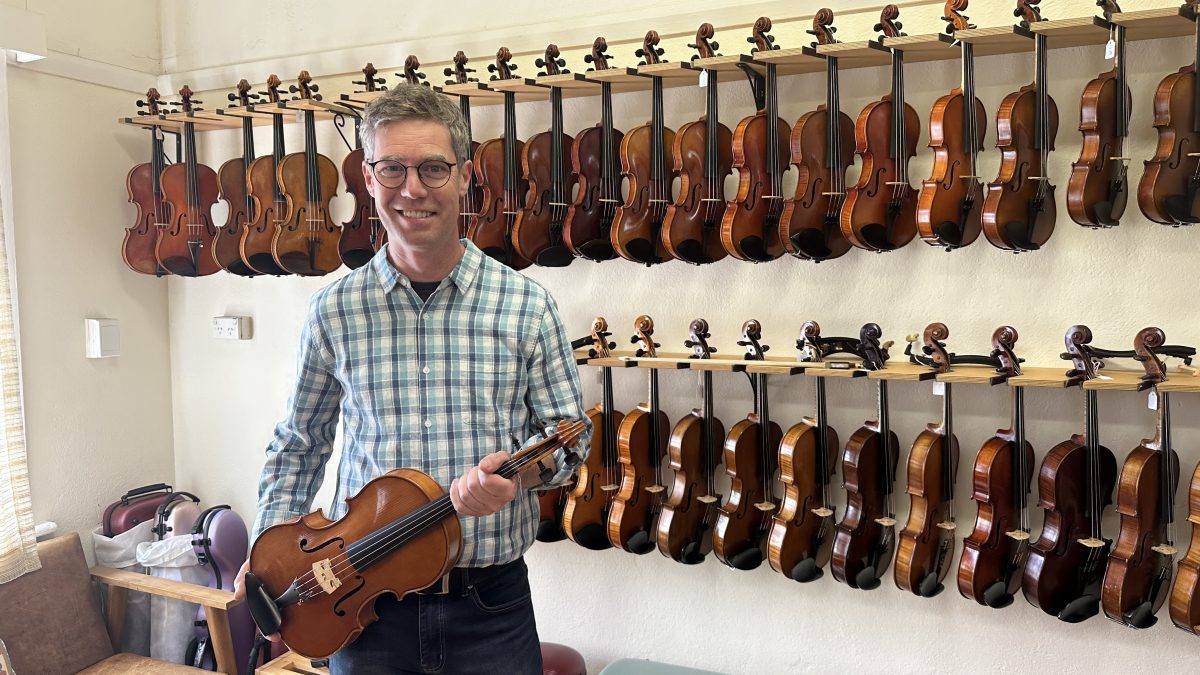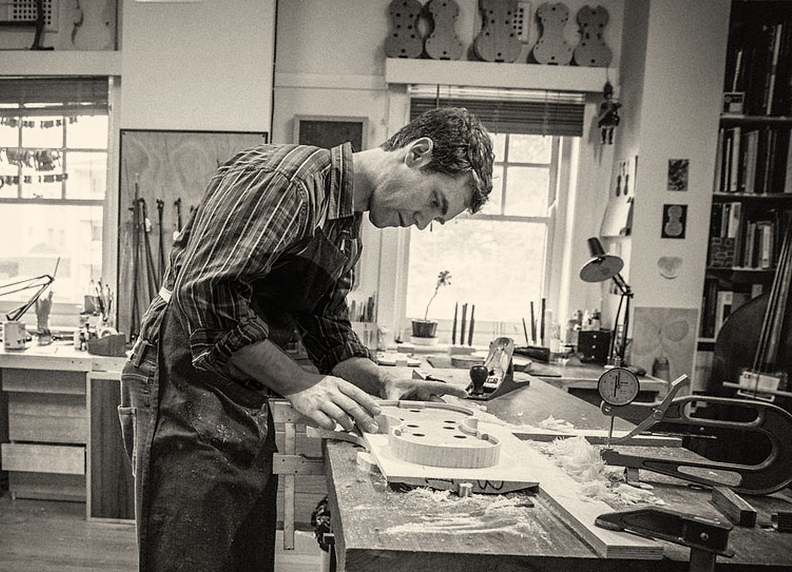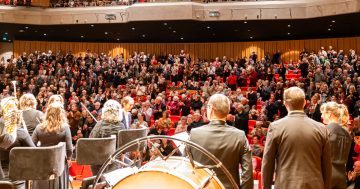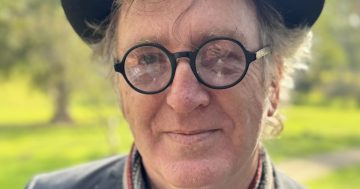
Canberran Hugh Withycombe is a professional luthier. Can you guess from the picture what he does? Photo: Travis Radford.
When Canberran Hugh Withycombe had his first brush with a cello in primary school, he had no clue he’d be the one making the instruments by hand some two decades later.
The luthier – or maker of stringed instruments – had his passion for music (specifically the cello) sparked as an eight-year-old boy at Canberra’s Forrest Primary School.
“They said, ‘Hugh, we think the cello is for you’, and I said, ‘Okay,'” Hugh laughs.
“I enjoyed playing it, but I realised at the end of school that I probably didn’t have the performing gene.”

Hugh crafting another musical masterpiece. Photo: Hugh Withycombe.
Hugh decided to keep music as a hobby and, like many Canberrans, went on to a career in the public service in the ’90s, working on a “sexy new policy initiative” called climate change.
“Working in that area, I became aware that I really wanted a tangible product at the end of a day’s work,” he says.
“I’d always enjoyed making things and I’d always enjoyed making music.
“At a certain point, I kind of had a bit of an epiphany and worked out, ‘Ah, someone must make the instruments that I enjoy playing. I wonder whether I could get involved in doing that?'”
Hugh was 26 and only just married when he decided to use his savings to move with his new wife halfway across the world to a small town in the English Midlands called Newark.
Here, he honed his craft at the Newark School of Violin Making and afterwards worked for a few years in London, where he likened the industry to high-end art dealing.
“At a certain point, the stringed instruments cross over from being a purely functional object to an art object,” Hugh says.
“The instrument stops being simply about what it sounds like and it’s more about who made it, what condition it’s in and who’s owned it in the past.
“In bringing the skills I have back to Canberra, quite often I’m trying to bring a certain level of quality while recognising the majority of people are looking to simply have a functional object.”
But according to Hugh, you don’t have to be a wealthy European art dealer to recognise the attributes of a handcrafted string instrument.
“It’s a bit like tailor-made clothes,” Hugh explains.
“All the things that are fraught with buying clothes on the internet are doubly so with a musical instrument because quite apart from sizing, you just don’t know what it’s going to sound like.”
While most cellos, violins and violas conform to a similar hourglass shape, subtle decisions like the thickness of the wood and the arrangement of the sound holes can all change the sound.
How Hugh makes these choices over the months-long design and creation process depends on elements such as the artist’s preferred genre, whether they play solo or with others, and the individual piece of wood itself.
Hugh estimates he’s made 50 to 60 string instruments and repaired thousands more, for everyone from folk fiddlers to professional orchestra players.
“It’s always a balance in trying to work out where the artistic value is and in my experience, I feel that both parties would like to think they have artistic merit and value, and I think they do,” Hugh says from his workshop at the Gorman Arts Centre in Braddon.
“However, sometimes as technicians, we get likened to the useful tradies who are good when you have a problem, but that’s all we are, the people not quite even in high-vis who come and fix the problems.
“But at the start of it all, there is the creation of an instrument and I think it’s a very creative process to bring out the potential in any instrument so that someone can express their own creativity with it.”
To find out more or to enquire about repairing or commissioning a string instrument, visit Hugh Withycombe’s website.
Original Article published by Travis Radford on Riotact.



